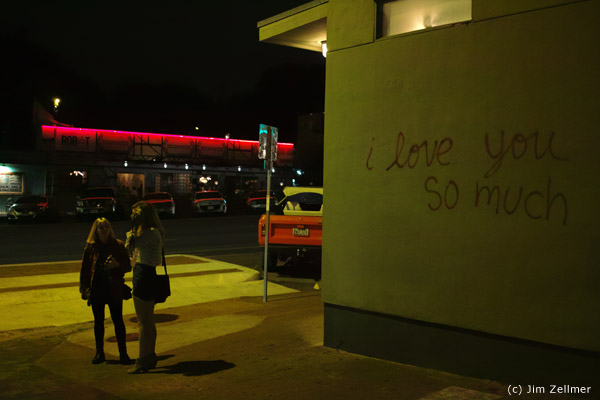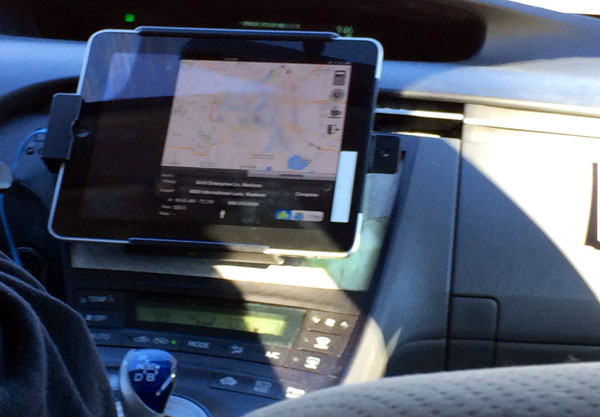Earlier this year Nissan began production in Sunderland of the Leaf, the first electric car to be mass-produced in the UK. But 40 years ago, about 100 electric cars were built on the Isle of Wight to a design which was years ahead of its time.
The Enfield 8000 was a prototype electric vehicle which emerged out of a competition run by the United Kingdom Electricity Council in 1966.
Enfield Automotive beat rival bidders like Ford for the contract and made more than 100 cars at its works on the Isle of Wight.
With a top speed of 48mph (77kph) and a range of up to 56 miles (90km), the car was aimed at low mileage urban users, and was expected to supply a much needed boost to Britain’s export push.
Jobs & Musk: Hardware and Systems Thinking
So what is their unique brand of genius? Here’s how I think of it: system-level design thinking powered by extraordinary conviction. Each of those italicized phrases is critical. Let’s dig in.
The first thing to note is that Jobs and Musk are not inventors in the typical sense of the word. The specific products they’re famous for all had numerous other creators. Steve Wozniak engineered the first Apple. The core ideas in the Mac’s graphical user interface came from Xerox PARC. Jony Ive was key to the design of the iPhone and iPad. A company called AC Propulsion helped craft the original tech vision for Tesla. And countless others made key contributions.
To appreciate Jobs’ and Musk’s contributions, you must pull the camera back. What they did uniquely was to imagine the broader ecosystems in which those products could become transformative. To do that involved an intimate understanding not just of the technology but of what would be necessary in design, logistics, and the business model to launch those products and make them truly compelling to potential customers. You can describe both men as amazing designers. But their design genius should be thought of as not just an obsession with satisfying shapes and appealing user interfaces. Those matter, but the start point is broader, system-level design. Most innovation is like a new melody. For Jobs and Musk it’s the whole symphony.
Crowd funding Cars
When Lindsay Frandsen thought about registering for gifts for her wedding, she realized that what she and her husband really needed was a car.
Ms. Frandsen and her husband, Christian Burris, opened an account with a start-up company that lets potential car buyers reach out to their social networks for gifts.
One year later, the couple had scraped together a down payment from their savings and the gifts from the registry. Hyundai also gave them a $500 credit for taking part in the program.
“We got a good chunk toward our down payment,” Ms. Frandsen, a 26-year-old driving instructor from Atlanta, said without being specific. “It’s like 500 free dollars, basically.”
Beware the top search results
Anyone in the US doing their holiday shopping from the product showcases that appear at the top of Google’s search results is almost certain to pay substantially more than if they delved deeper in the search engine.
Five out of every six items in the panels shown on a Google search made in America are more expensive than the same items from other merchants hidden deeper in the index, with an average premium of 34 per cent, according to a Financial Times analysis.
The scale of the apparent premium pricing drew complaints from some Google critics, who said it echoed issues that are at the heart of an antitrust case in Brussels in which the company has already reached a tentative settlement with European regulators.
By showing its chosen product listings prominently while relegating other services, Google could make more money from merchants who paid to have their products featured, said Gary Reback, a Silicon Valley lawyer who represents a number of the search engine’s rivals.
Google countered that the price paid by consumers was only one consideration in how it selected items to appear in the panels. “Just as people consider multiple factors when they shop, like free shipping or whether they prefer a particular retailer, there are a variety of factors” at work, it said.
Critics claim that many consumers do not realise the product listings are advertising rather than Google’s selection of the best products to buy. Unlike other panes that show advertising on the search engine, the panels are not tinted a different colour and are labelled “sponsored” rather than “ads”.
Thankful

It is easy to grumble. Perhaps common.
Yet, God manages to catch our attention at opportune moments.
Settling into the cramped “A” seat for two plus hours on an ERJ-145 recently, the flight attendant mentioned while closing the door – for the second time – (a ground worker noticed that the door did not appear to be properly sealed) that she has been astonished to learn how many people it takes to make the air travel system work.
The smart and bubbly flight attendant then went on to tell me that “I have wanted to fly my whole life”. “My parents would not let me become a flight attendant after high school. I went to college, obtained my teaching degree and taught for 20 years. I retired and became a flight attendant.”
“I love to FLY”!
…..
Other days, shoe shine wisdom appears.
…..
President Abraham Lincoln proclaimed a national day of “Thanksgiving and Praise to our beneficent Father who dwelleth in the Heavens“, to be celebrated on Thursday, November 26.
So we begin with God, Creator of all and Father of our Savior.
Our day to day life is rather different from the early pilgrims, much less 19th century America.
I am further thankful for my ever patient family, children, health, smart colleagues, gracious friends, past teachers, healthcare professionals, government and the information & communication technology revolution (ICT). I am thankful for the opportunities that have arisen from the petri dish that is my life.
Happy Thanksgiving!
Andreessen on Automotive Disruption
But people love their cars. They have their stuff in their cars, the car seats for their baby, their Frisbees, their golf clubs—it’s their second home. People aren’t going to give that up, are they?
Ask a kid. Take teenagers 20 years ago and ask them would they rather have a car or a computer? And the answer would have been 100% of the time they’d rather have a car, because a car represents freedom, right?
Today, ask kids if they’d rather have a smartphone or a car if they had to pick and 100% would say smartphones. Because smartphones represent freedom. There’s a huge social behavior reorientation that’s already happening. And you can see it through that. And I’m not saying nobody can own cars. If people want to own cars, they can own cars. But there is a new generation coming where freedom is defined by “I can do anything I want, whenever I want. If I want a ride, I get a ride, but I don’t have to worry. I don’t have to make car payments. I don’t have to worry about insurance. I have complete flexibility.” That is freedom too.
Software, Geography & Communities
This is why location is becoming so much less important: technology is enabling us to access everything we need from our mobile phone, to find our true communities in the cloud, and to easily travel to assemble these communities in person. Taken together, we are rapidly approaching a future characterized by a totally new phenomenon, the reverse diaspora: one that starts out internationally distributed, finds each other online, and ends up physically concentrated.
What might these reverse diasporas be like? As a people whose primary bond is through the internet, many of their properties would not fit our pre-existing mental models. Unlike rugged individualists, these emigrants would be moving within or between nation states to become part of a community, not to strike out on their own. Unlike would-be revolutionaries, those migrating in this fashion would be doing so out of humility in their ability to change existing political systems. And unlike so-called secessionists, the specific site of physical concentration would be a matter of convenience, not passion; the geography incidental and not worth fighting over.
Report: Impact of Electric Vehicle Charging on Electric Grid Operations Could Be More Benign than Feared
Pecan Street Research Institute:
Electric vehicle (EV) owners are charging their cars much less during hot summer afternoons than most behavioral models predict.
That is one of the findings from a new PSR Analytics report that measured Summer 2013 vehicle charging in the nation’s highest residential concentration of electric cars. The analysis found that charging behavior is much more diverse than has been predicted, represents a much more manageable energy load and may be highly elastic to time-of-use pricing and similar tools.
If such findings are confirmed by other research, it could significantly increase utility industry estimates on the number of EVs the electric grid could handle without triggering disruptions or requiring major system upgrades.
PSR Analytics is produced by Texas-based energy research firm Pecan Street Research Institute. The institute’s electric vehicle research trial in Austin, Texas has what appears to be the highest U.S. concentration of electric vehicles, including over 50 in a single half-square mile neighborhood. The institute’s data-intensive research trials (currently in three states) has produced the world’s largest research database of residential energy use.
Over the Air Tesla Software a Update Removes a “a Smart Air Suspension” Feature
One of Tesla features is a $2,250 “smart air suspension” option that automatically lowers the car at highway speeds for better mileage and stability. Over a period of 5 weeks, three Tesla Model S cars had caught fire after severe accidents – two of them apparently from running over road debris that may have punctured the battery pack that made up the floor pan of the car. After the car fires Tesla pushed a software release out to its users. While the release notice highlighted new features in the release, nowhere did it describe that Tesla had unilaterally disabled a key part of the smart air suspension feature customers had purchased.
Only after most of Telsa customers installed the downgrade did Tesla’s CEO admit in a blog post, “…we have rolled out an over-the-air update to the air suspension that will result in greater ground clearance at highway speed.”
Translation – we disabled one of the features you thought you bought. (The CEO went on to say that another software update in January will give drivers back control of the feature.) The explanation of the nearly overnight removal of this feature was vague “…reducing the chances of underbody impact damage, not improving safety.” If it wasn’t about safety, why wasn’t it offered as a user-selected option? One could only guess the no notice and immediacy of the release had to do with the National Highway Safety Administration investigation of the Tesla Model S car fires.
via Steven Sinofsky.
Prius Taxi Economics


A recent Prius taxi ride offered a bit of data on fuel efficiency, durability and cost of ownership.
The kind driver mentioned that the Prius had 277,000 miles on it. “We replace the battery pack at 150,000 miles. They are expensive, about $5,000.00. “We average at least 41mpg and drive them hard. One Prius in our fleet has 350,000 miles on it. They cost about $28,000 new.”
It occurs to me that a diesel Golf, Jetta or Passat might be a better deal economically. I wonder if someone has done the math?
The Prius is certainly an interesting car and marketing initiative, but I do find them somewhat less “solid” than others.
A recent Asymcar podcast questioned why fleet owners have been slow to adopt non-traditional power systems.
Finally, I am constantly amazed at the places I find iPad apps used for line of business functions. The iOS wave continues to grow.